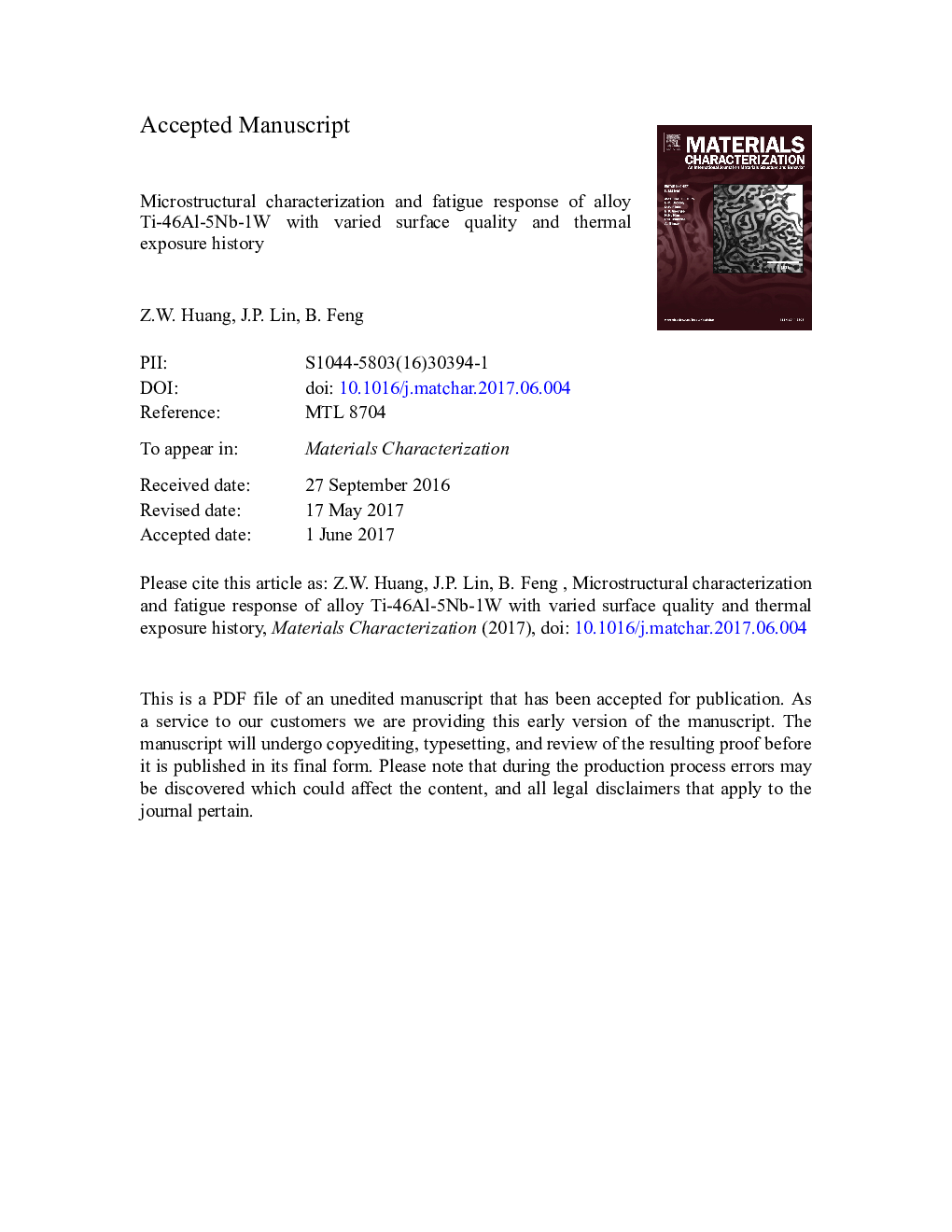| Article ID | Journal | Published Year | Pages | File Type |
|---|---|---|---|---|
| 5454717 | Materials Characterization | 2017 | 34 Pages |
Abstract
The stress controlled fatigue behaviour of a coarse-grained fully lamellar TiAl alloy Ti-46Al-5Nb-1W has been investigated under no exposure, block exposure and individual exposure-oxidation conditions (exposure for 10,000 h at 700 °C) to assess the effects of surface roughness, stress concentration, oxidation and inner microstructural changes. The alloy is observed to be sensitive to surface damage, but less sensitive to V-notch even after exposure because the surface area sampling the highest stress significantly reduces the EDM impact and exposure effect. Unlike grain-refined alloys, both shot peening and electropolishing offered a moderate and roughly the same increase in fatigue limit, indicating that for a coarse-grain fully lamellar alloy the control factor for fatigue is lamellar colony size. Fatigue performances are improved for all surfaces when subjected to block exposure, attributed to a long-term annealing which outweighs the harmful effects from microstructural embrittlement. After individual exposure-oxidation, fatigue performance deteriorates significantly for the shot peened and moderately for the electropolished but not for the EDM wired. The behaviour can be understood based on whether or not the beneficial changes outweigh the detrimental changes for a specific surface.
Keywords
Related Topics
Physical Sciences and Engineering
Materials Science
Materials Science (General)
Authors
Z.W. Huang, J.P. Lin, B. Feng,
